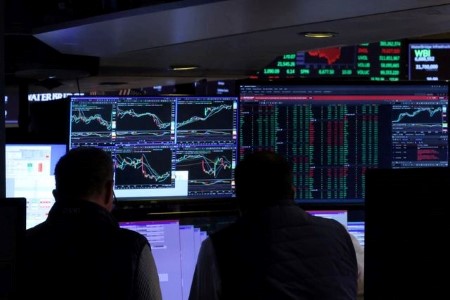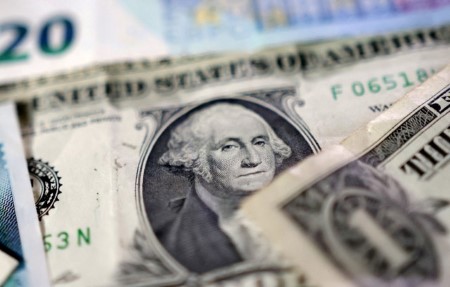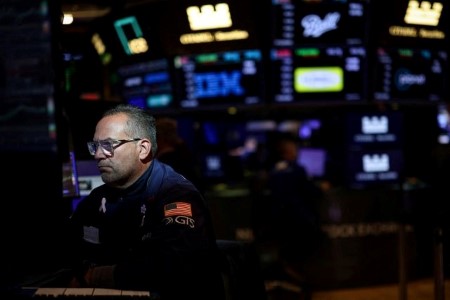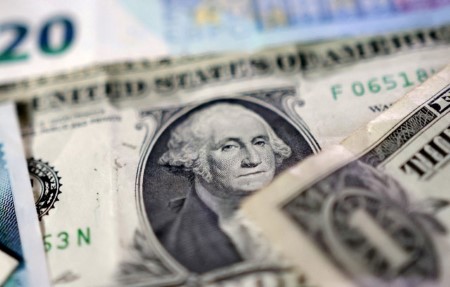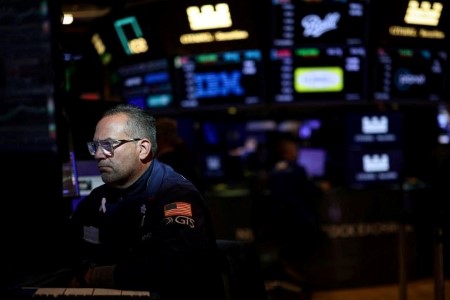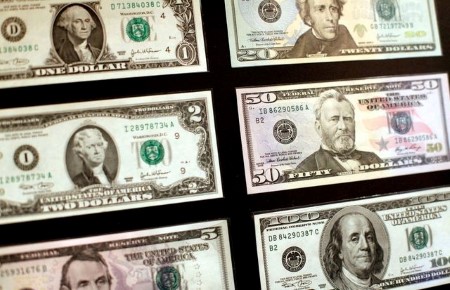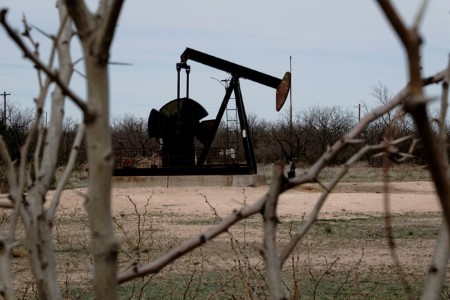NEW YORK- The US dollar rose against most major currencies on Wednesday, a day after the Federal Reserve delivered an expected rate cut but signaled little urgency to lower borrowing costs quickly in the coming months.
The dollar was supported by data that showed the number of Americans filing new applications for unemployment benefits fell last week, reversing the prior week’s jump.
The dollar’s broad strength pressured the British pound, erasing earlier gains logged after the Bank of England left rates on hold and slowed the pace of its government bond sales.
The Fed reduced rates by a quarter point on Wednesday, as expected, with Chair Jerome Powell characterizing the day’s policy action as a risk-management cut in response to the weakening labor market, but said the central bank did not need to rush easing.
Powell’s words fell short of the “unequivocal dovishness that the markets were expecting,” Eric Theoret, FX strategist at Scotiabank said.
The upbeat economic data on Thursday combined with the heavy selling the dollar had seen at the start of the week was enough to lift the dollar, Theoret said.
“I think the balance for the markets was kind of just leaning all to one side and so, it would have taken a lot to break the US dollar even further from here,” he said.
Analysts were divided on what to make of the Fed messaging.
While those at Goldman Sachs said that many hints had pointed to Wednesday’s cut being the first among many, their counterparts at ANZ characterized the Fed Chair’s commentary as “not at all dovish”.
The dollar dropped to the lowest since February 2022 at 96.224 against a basket of major peers immediately after the rate decision on Wednesday, but sprang back to trade up 0.4% at 97.347 on Thursday.
Meanwhile, the pound initially edged up after the BoE’s decision, but gave up those gains to trade 0.6% lower on the day at USD 1.35515. Sterling had briefly leaped to the highest since July 2 at USD 1.3726 in the prior session.
BoE policymakers voted 7-2 to slow the annual pace at which the central bank unloads the gilts that it purchased from 2009 and 2021 to 70 billion pounds from 100 billion pounds, broadly in line with a Reuters poll median forecast for it to be cut to 67.5 billion.
“We think the market is positioned too bearishly on the pound,” said Benjamin Ford, researcher at macro research and strategy firm Macro Hive.
The euro was 0.2% lower at USD 1.17893, after retreating from its highest level since June 2021 at USD 1.19185 on Wednesday in a knee-jerk reaction to the Fed announcement.
NORWAY CUTS RATES, YEN SLIPS AHEAD OF BOJ
The Norwegian crown fell 0.5% against the dollar after the Norges Bank cut rates 25 basis points to 4.0%, its second cut in three months. The central bank signaled rates could continue to fall.
Elsewhere, the dollar was 0.6% firmer against the Japanese yen at 147.88 ahead of the Bank of Japan’s policy decision on Friday.
The BOJ is widely expected to refrain from hiking rates, although markets price in a quarter-point increase by end-March, with about 50% odds of it happening within this year.
The spotlight is on an October 4 vote where the ruling Liberal Democratic Party will elect a new leader to replace outgoing Prime Minister Shigeru Ishiba, who is stepping down following a bruising defeat in upper house elections.
Data on Thursday showed that New Zealand’s gross domestic product (GDP) fell 0.9% in the second quarter from the previous three months, worse than forecast by analysts and the Reserve Bank of New Zealand.
This weighed on the New Zealand dollar, which fell 1.4% as traders added to bets on policy easing by the country’s central bank.
Cryptocurrency bitcoin was 1.9% higher at USD 117,837.
(Reporting by Saqib iqbal Ahmed; Additional reporting by Kevin Buckland, Jaspreet Kalra and Canan Sevgili; Editing by Sonali Paul, Gareth Jones, Frances Kerry, Philippa Fletcher)







 DOWNLOAD
DOWNLOAD





